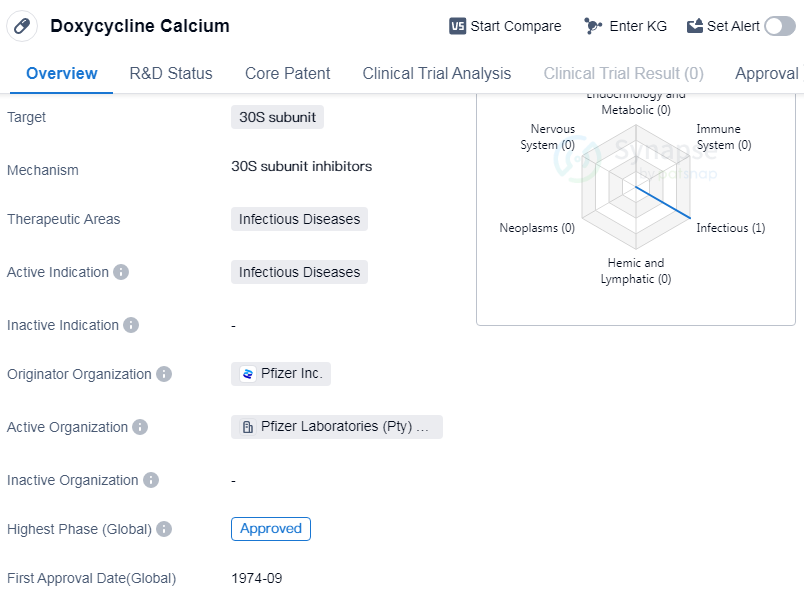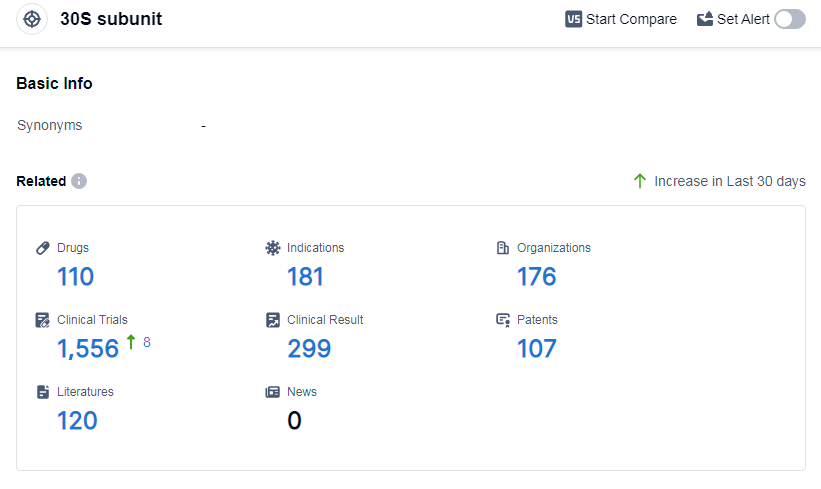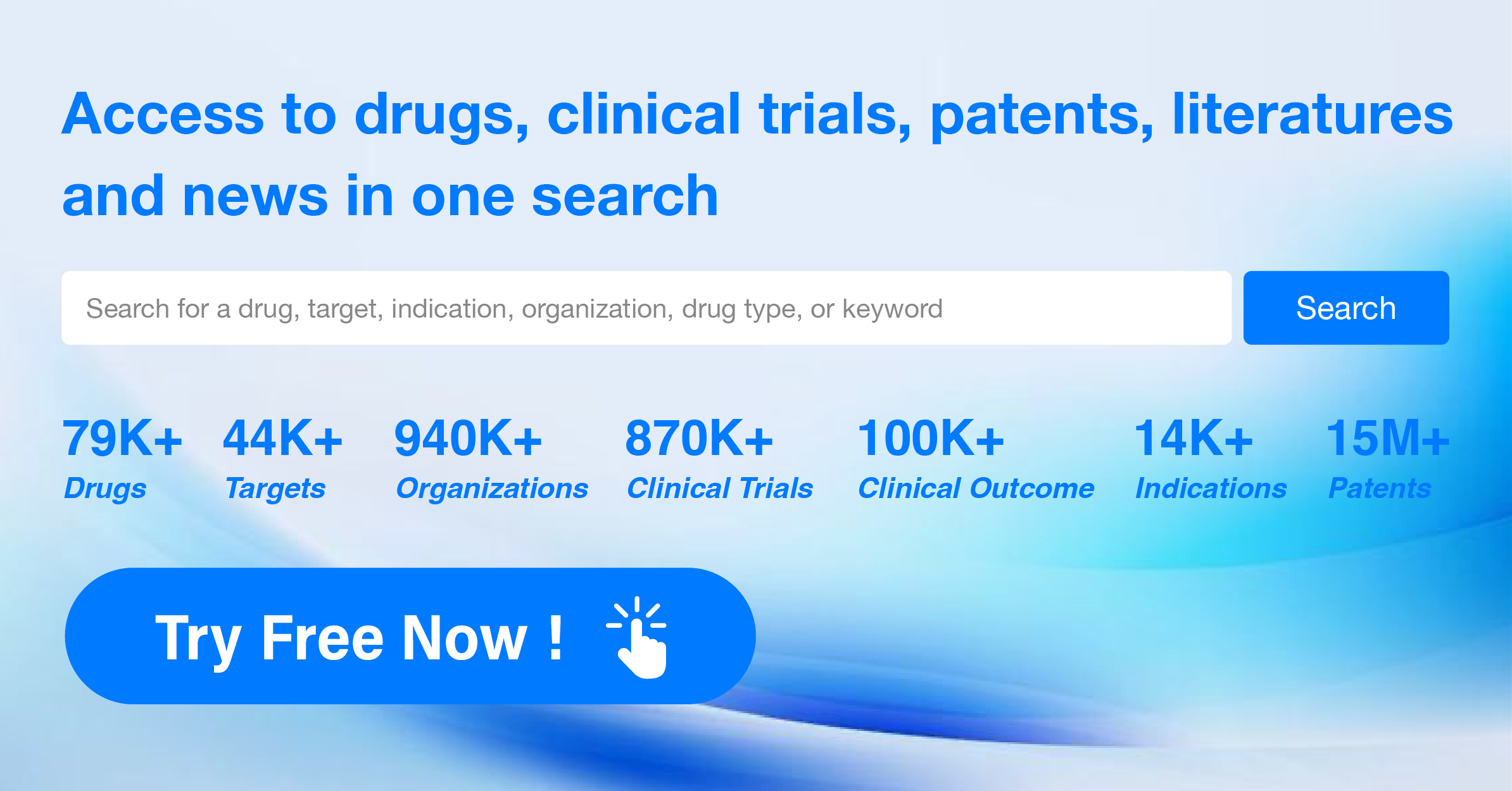Unleashing the Power of Doxycycline Calcium: A Comprehensive Review on R&D Breakthroughs
Doxycycline Calcium's R&D Progress
Doxycycline Calcium is a small molecule drug that falls under the therapeutic area of infectious diseases. It specifically targets the 30S subunit, which is involved in protein synthesis in bacteria. This drug is primarily used for the treatment of infectious diseases.
Doxycycline Calcium was first approved in the United States in September 1974. It is important to note that the drug's approval status is listed as "Approved," indicating that it has successfully undergone the necessary regulatory processes and is available for use in the market.
The originator organization of Doxycycline Calcium is Pfizer Inc., a renowned pharmaceutical company. As the originator, Pfizer Inc. is responsible for the initial development and marketing of the drug.
The drug's active indication is also infectious diseases, which suggests that it is specifically designed to combat various types of infections caused by bacteria. Infectious diseases can range from common infections like urinary tract infections and respiratory tract infections to more severe conditions like pneumonia and Lyme disease.
Doxycycline Calcium belongs to a class of antibiotics called tetracyclines, which are known for their broad-spectrum activity against a wide range of bacteria. It works by inhibiting protein synthesis in bacteria, thereby preventing their growth and replication.
Since its first approval in 1974, Doxycycline Calcium has been widely used in the treatment of infectious diseases. Its long history of use and approval status indicate its efficacy and safety profile. The drug has likely undergone extensive clinical trials and studies to establish its effectiveness and safety in treating infectious diseases.
👇Please click on the image below to directly access the latest data (R&D Status | Core Patent | Clinical Trial | Approval status in Global countries) of this drug.
Mechanism of Action for Doxycycline Calcium: 30S subunit inhibitors
30S subunit inhibitors are a type of drugs that target the 30S ribosomal subunit, which is a component of the bacterial ribosome. The ribosome is responsible for protein synthesis in bacteria. By inhibiting the 30S subunit, these drugs prevent the ribosome from functioning properly, thereby disrupting bacterial protein synthesis. This ultimately leads to the inhibition of bacterial growth and can be used as a therapeutic approach to treat bacterial infections. Examples of 30S subunit inhibitors include tetracyclines and aminoglycosides.
Drug Target R&D Trends for Doxycycline Calcium
According to Patsnap Synapse, as of 14 Sep 2023, there are a total of 110 30S subunit drugs worldwide, from 176 organizations, covering 181 indications, and conducting 1556 clinical trials.
The analysis of the target 30S subunit reveals a competitive landscape with multiple companies focusing on research and development. Pfizer Inc. has the highest stage of development with 6 approved drugs. Bacterial infections are the most targeted indication, with a significant number of approved drugs. Small molecule drugs are progressing rapidly, indicating intense competition in this area. China is leading in terms of drug development, followed by the United States, Japan, and the European Union. The future development of the target 30S subunit is promising, with ongoing research and development efforts focused on addressing various indications and drug types.
👇Please click on the picture link below for free registration or log in directly if you have a freemium account, you can browse the latest research progress on drugs, indications, organizations, clinical trials, clinical results, and drug patents related to this target
Conclusion
In conclusion, Doxycycline Calcium is a small molecule drug developed by Pfizer Inc. It targets the 30S subunit and is primarily used for the treatment of infectious diseases. With its first approval in 1974, it has been widely used and recognized as an effective treatment option for various bacterial infections.






